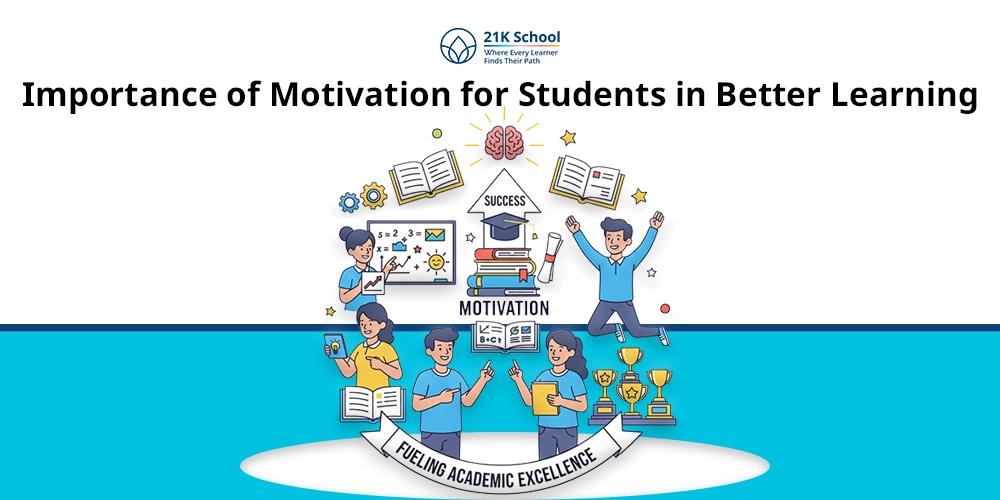
Imagine a classroom where both boys and girls are sitting next to each other, working on the same ideas, problem-solving with each other, and exploring new topics.
This kind of learning is known as co-education. Students who learn together without any gender age or coloured discrimination seems more practical in life.
Students respect all hender and learn under one roof, grow naturally together academically, socially, and emotionally.
However, nowadays co-ed is a debatable topic. Some people believe that it’s better to stay in a real world environment.
On the other hand others feel it may pose distractions or overlook individual learning needs. So the journey of co-education is still a doubtable step.
To get the right solution let’s take a close look at the advantages and disadvantages of co-education.
Table of Contents
- What is Co-Education?
- Advantages of Co-Education for Students
- 1. Social Skills
- 2. Interpersonal Communication
- 3. Preparation for the Real World
- 4. Enhanced Communication and Collaboration
- 5. Healthy Competition and Motivation
- 6. Breaking Down Gender Stereotypes
- 7. Reduced Costs and Increased Accessibility
- 8. Mutual Respect and Understanding
- 9. Makes Kids Brave And Bold
- Disadvantages of Co-Education for Students
- Conclusion
What is Co-Education?
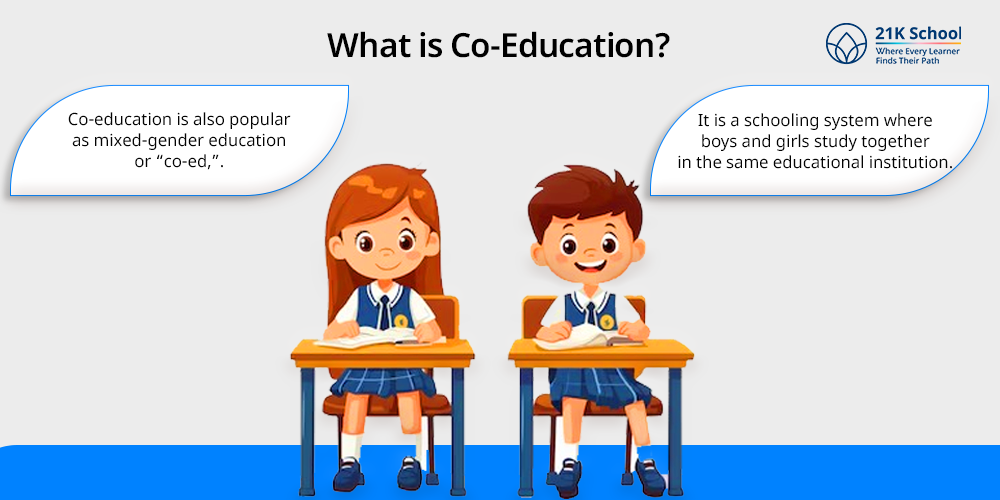
Co-education is also popular as mixed-gender education or “co-ed,”. It is a schooling system where boys and girls study together in the same educational institution.
The abbreviation of “co-education” means “joint education“.
It is an ideal approach where both gender students learn and grow alongside each other, promoting socialization and interaction from a young age.
Learn about importance of co-education.
Advantages of Co-Education for Students
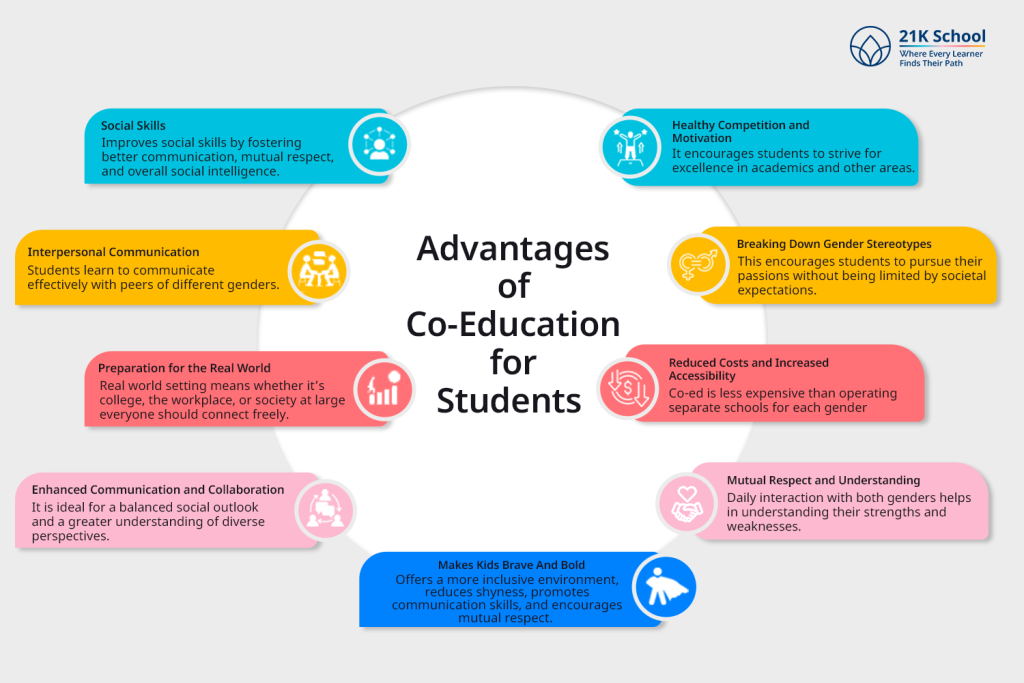
There are numerous benefits of co education for students, from enhanced social skills, improved communication to greater preparation for the real world.
Explore the advantages of co education for students in key points:
1. Social Skills
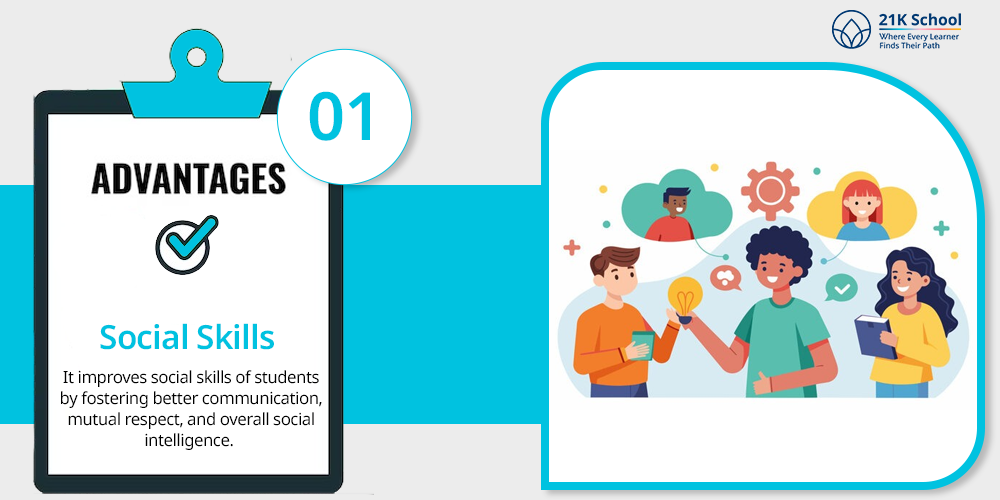
Co-education improves social skills of students by fostering better communication, mutual respect, and overall social intelligence.
Here they learn interaction with other students of all genders from a young age. This ensures confidence, emotional intelligence, and adaptability.
2. Interpersonal Communication
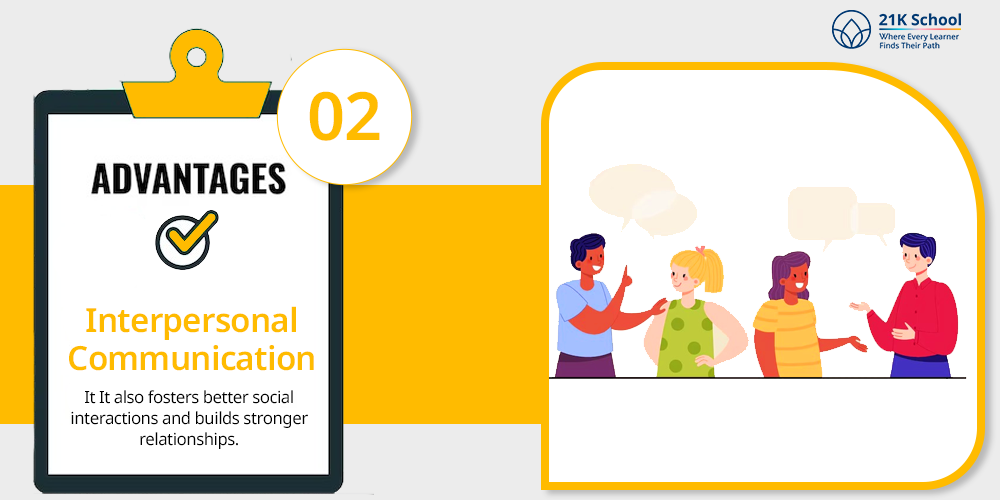
One of the biggest strengths of co-education is interpersonal communication.
Students learn to communicate effectively with peers of different genders. It also fosters better social interactions and builds stronger relationships.
3. Preparation for the Real World
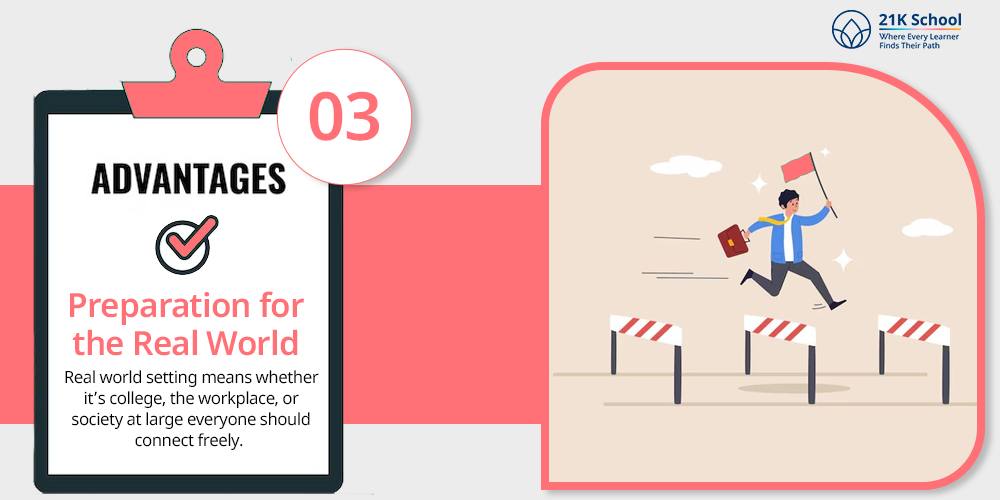
One key benefit of co-education is that it helps students prepare for real-world environments.
Real world setting means whether it’s college, the workplace, or society at large everyone should connect freely.
It is important for students to look at the reality and engage them in diverse environments.
4. Enhanced Communication and Collaboration
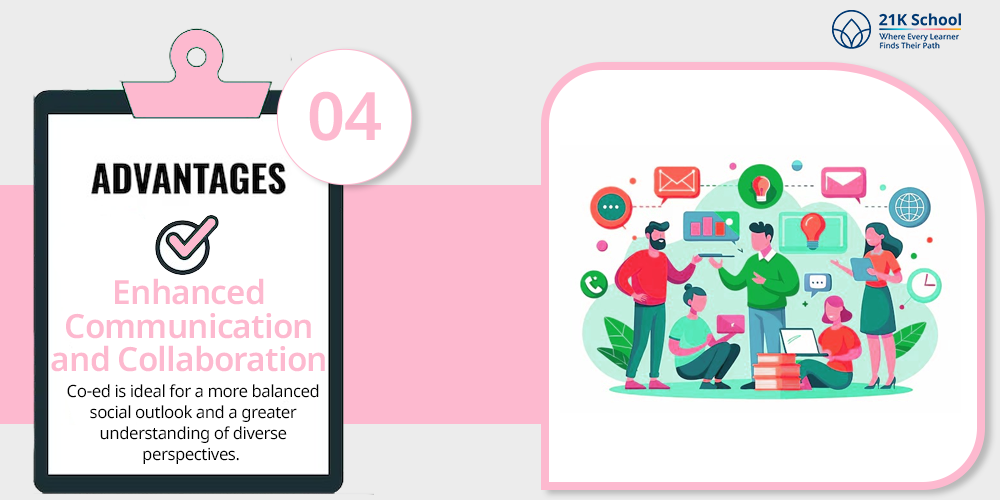
Each individual’s mindset is different. By learning together, it enhances communication and collaboration skills of both boys and girls.
Co-ed is ideal for a more balanced social outlook and a greater understanding of diverse perspectives.
5. Healthy Competition and Motivation

Co-ed fosters a healthy competitive environment among students. It encourages students to strive for excellence in academics and other areas.
Students are often motivated to compete with the opposite gender or mix in groups. This leads to improved academic performance and personal grooming of students.
6. Breaking Down Gender Stereotypes
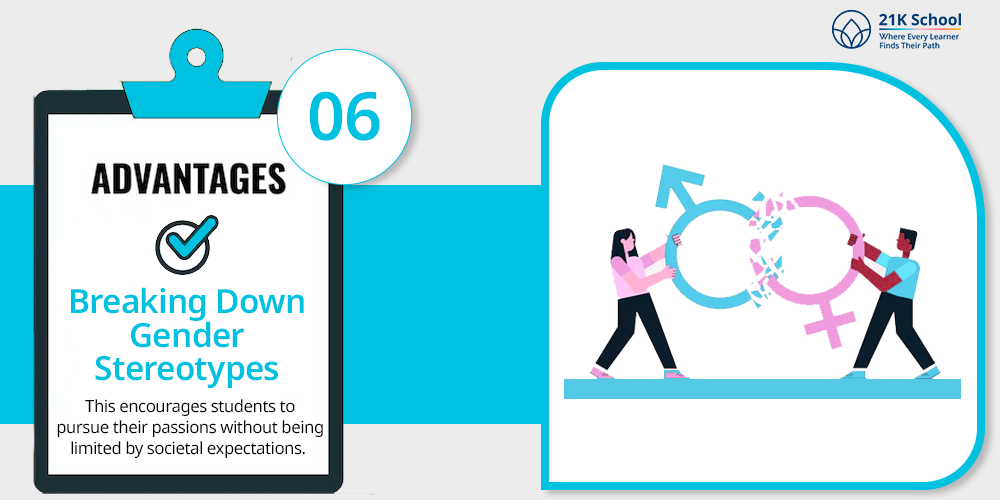
Breaking down gender stereotypes in co-ed means where boys and girls learn together promotes gender equality.
This encourages students to pursue their passions without being limited by societal expectations.
For example, boys can approach girls in artwork and girls can cheer up boys in sports.
7. Reduced Costs and Increased Accessibility
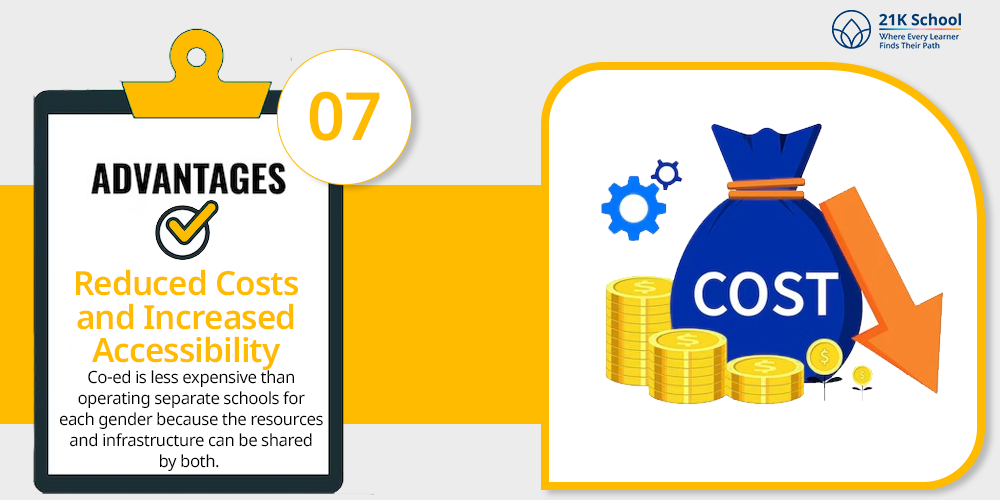
One of the advantages of co-ed includes reduced costs and increased accessibility. This will help a lot of parents and students.
Co-ed is less expensive than operating separate schools for each gender because the resources and infrastructure can be shared by both.
8. Mutual Respect and Understanding
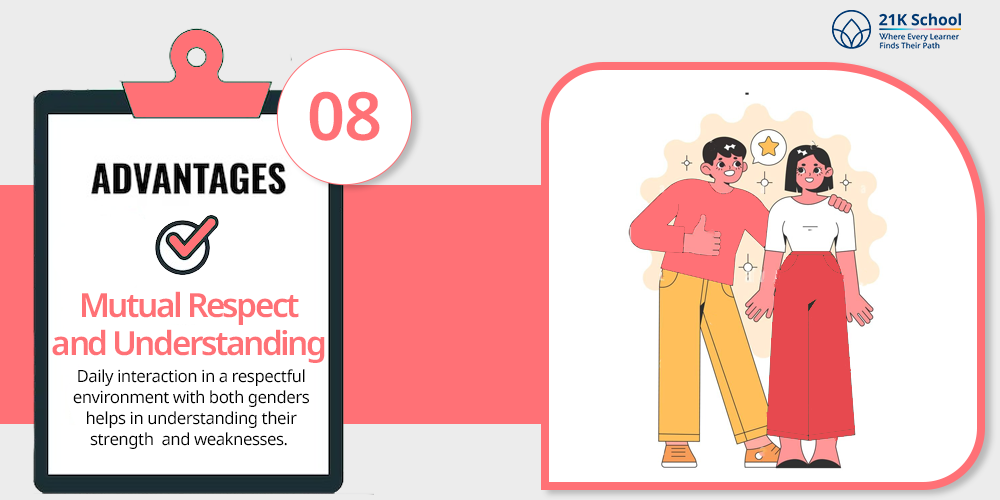
Studying together builds mutual respect and understanding in students by exposing students to diverse perspectives and promoting gender equality.
Daily interaction in a respectful environment with both genders helps in understanding their strengths and weaknesses.
9. Makes Kids Brave And Bold
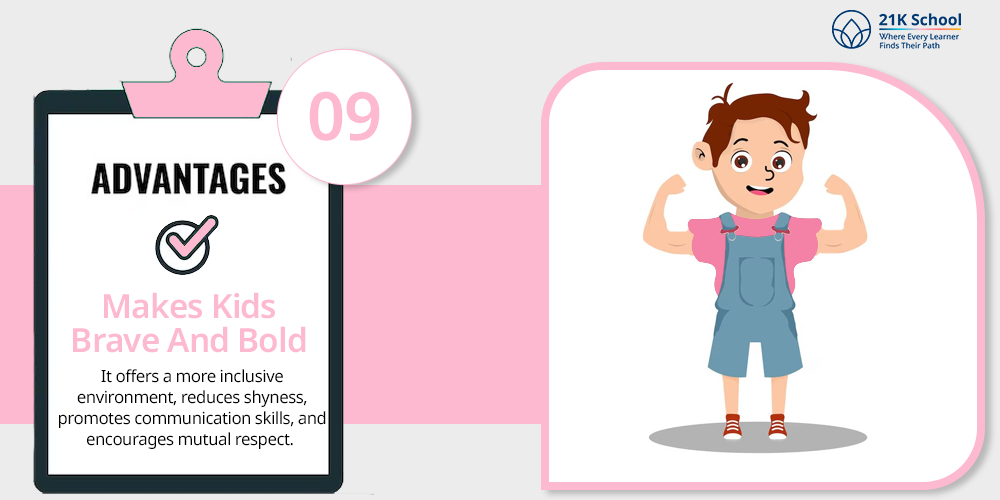
Co-education has several advantages, one of them is making kids brave and bold.
It offers a more inclusive environment, reduces shyness, promotes communication skills, and encourages mutual respect.
Learn the importance of communication skills in the 21st century for career growth.
Students get to know each other, learn how to express themselves, voice opinions, and handle criticism accordingly.
Disadvantages of Co-Education for Students
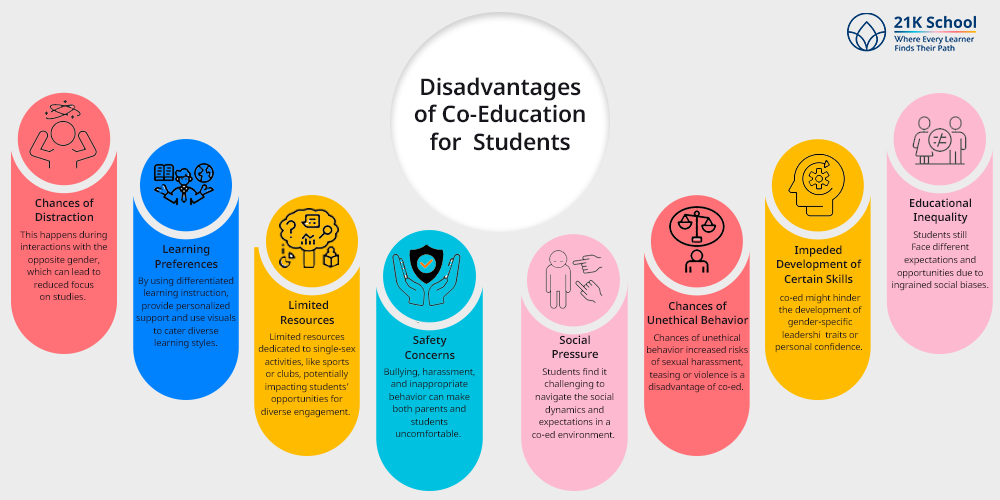
Every approach comes with its own set of advantages and disadvantages. It is crucial to consider all viewpoints before reaching a decision.
Co-education offers several benefits, it still faces resistance from certain sections of society who are hesitant to embrace the concept.
Below are some of the commonly known disadvantages or concerns of co-education.
1. Chances of Distraction
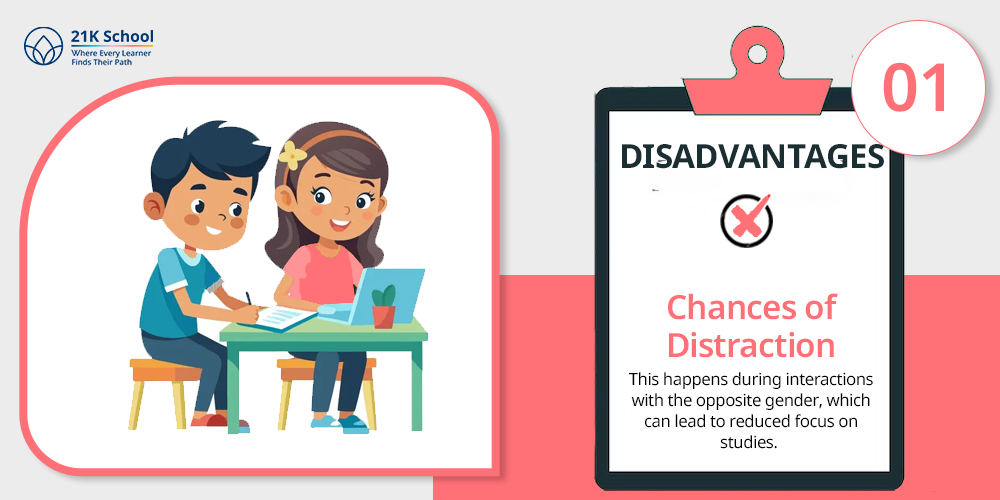
One of the disadvantages of co-education for students that bothers a lot is chances of distraction.
This happens during interactions with the opposite gender, which can lead to reduced focus on studies.
Schools like 21K School implement structured classroom routines and a focused curriculum engage them which reduce distraction.
2. Learning Preferences
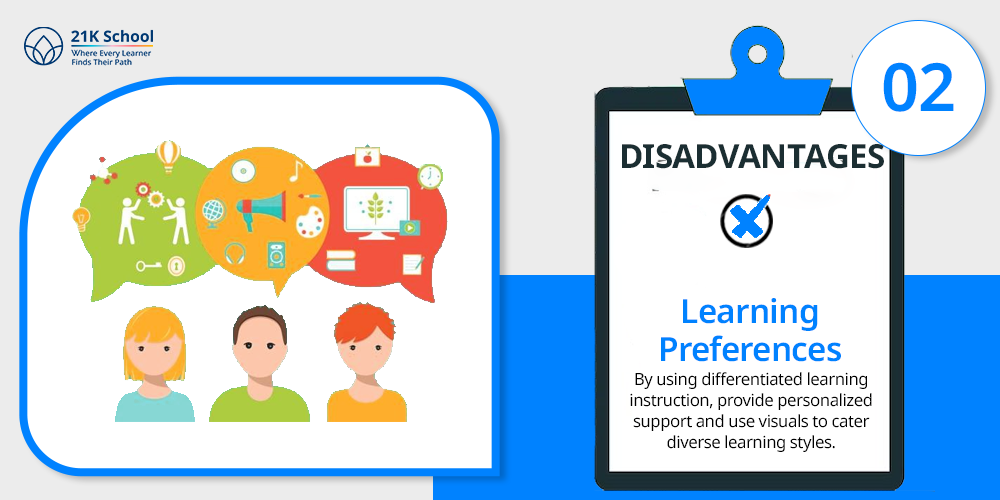
Due to co-ed, students get potential distractions and social pressure. This can affect their learning preferences and academic performance.
By using differentiated learning instruction, provide personalized support and use visuals to cater diverse learning styles.
3. Limited Resources

Co-ed schools may have limited resources dedicated to single-sex activities, like sports or clubs, potentially impacting students’ opportunities for diverse engagement.
Due to limited funds, limited resources can be a disadvantage for students. However, schools can add gender-inclusive clubs, events and corporate social responsibility initiatives.
4. Safety Concerns
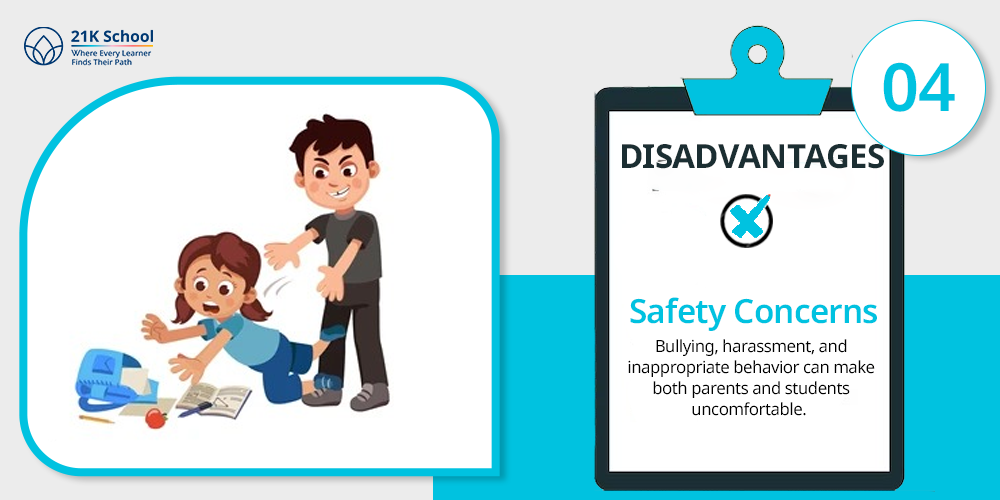
In some cases parents may be concerned about their child’s safety due to co-ed especially for girl children.
Bullying, harassment, and inappropriate behavior can make both parents and students uncomfortable.
This can be handled by schools by establishing zero-tolerance policy, providing trained counsellors and arranging gender-sensitivity workshops.
5. Social Pressure
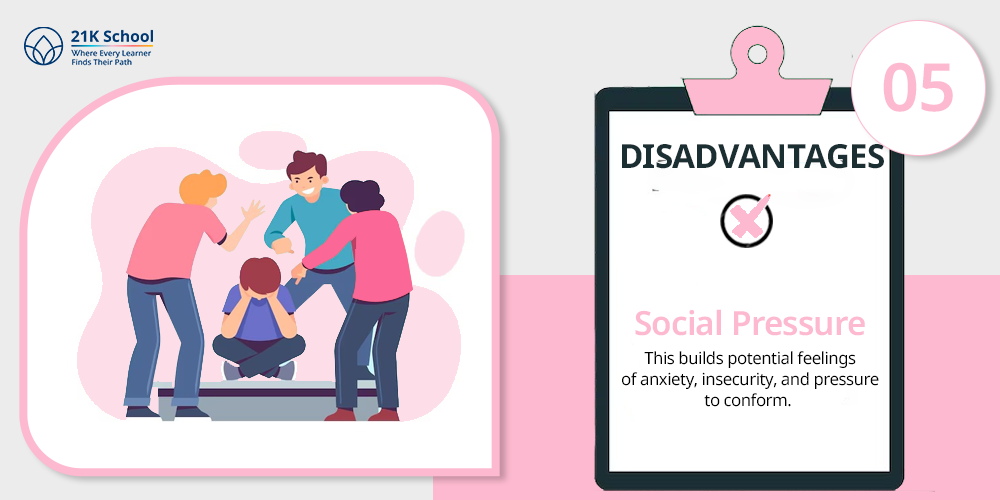
One of the disadvantages is social pressure, where students find it challenging to navigate the social dynamics and expectations in a co-ed environment.
This builds potential feelings of anxiety, insecurity, and pressure to conform. However, this can be resolved.
If schools like 21K school promote self-worth and individuality, encourage open discussions to overcome shyness or peer pressure.
6. Chances of Unethical Behavior
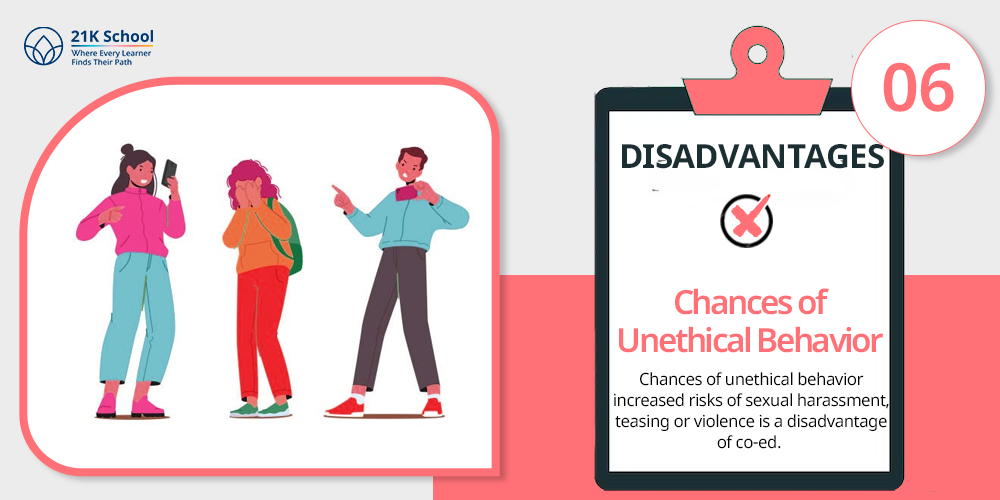
Chances of unethical behavior increased risks of sexual harassment, teasing or violence is a disadvantage of co-ed.
This can lead to an unhealthy academic environment for students. By integrating moral education and digital literacy into the curriculum can help students.
7. Impeded Development of Certain Skills

Some parents and students believe that co-ed might hinder the development of gender-specific leadership traits or personal confidence.
Explore more about the student leadership qualities in today’s era.
This specifically happens where one gender dominates classroom dynamics.
Schools can ensure gender-specific clubs, workshops, or mentoring programs to develop 21st century skills for future growth of students.
8. Educational Inequality
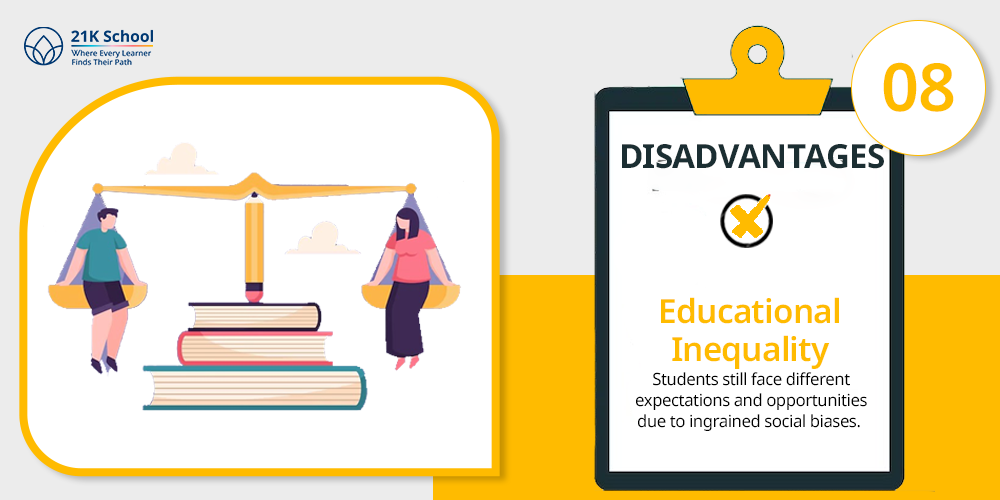
There are numerous disadvantages of co-ed, educational inequality is one of them.
Students still face different expectations and opportunities due to ingrained social biases. This could cause imbalances in educational opportunities.
However, training teachers on unconscious bias and inclusive teaching methods can be beneficial. They can also encourage equal participation of both genders.
Conclusion
Co-education is a dynamic educational model that comes with its own set of benefits and limitations.
While it encourages social integration, confidence, and readiness for the real world, it also presents challenges like distractions, social pressures, and potential behavioral issues.
The solution is to balance with supportive teachers, a well-structured curriculum, and a strong emphasis on values and experience.
Co-educational institutions can offer a enriching and holistic learning experience. Whether co-education is the right choice depends on individual student needs, parental preferences, and institutional effectiveness.
But one thing remains clear, when implemented thoughtfully, co-education can be a powerful tool for shaping well-rounded, respectful, and resilient individuals.

